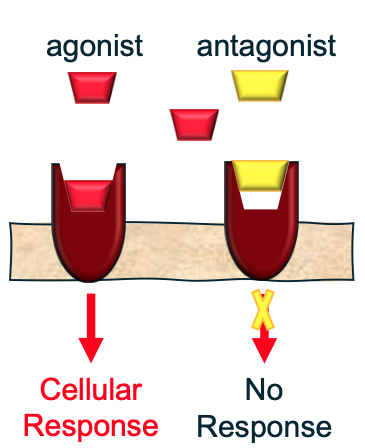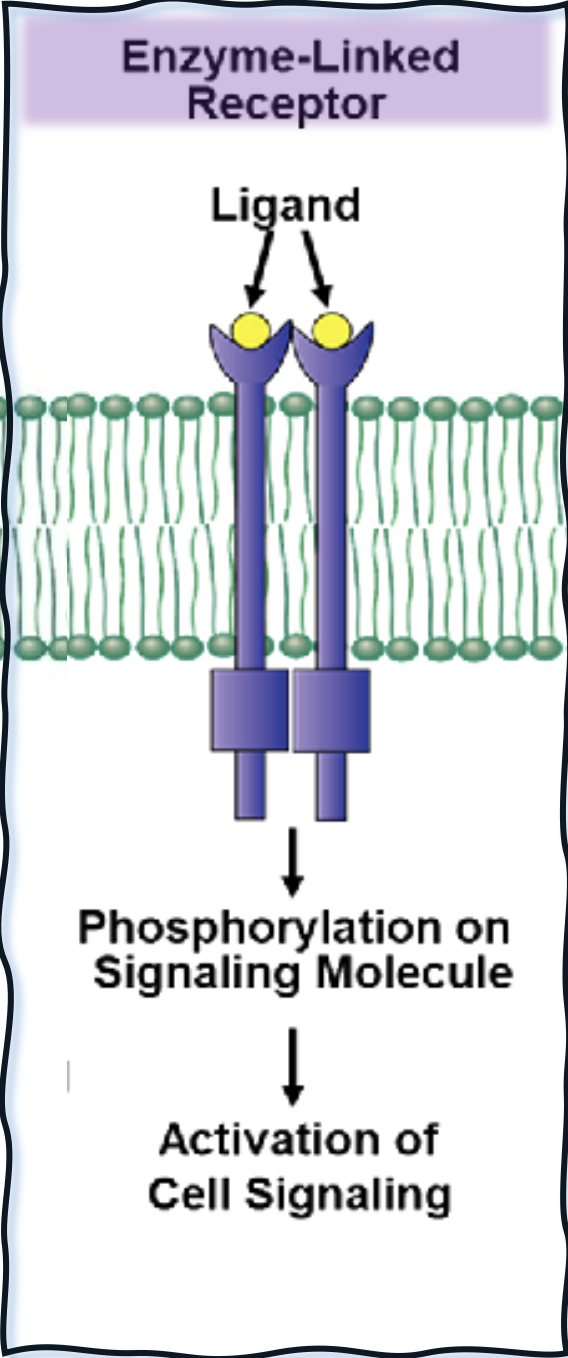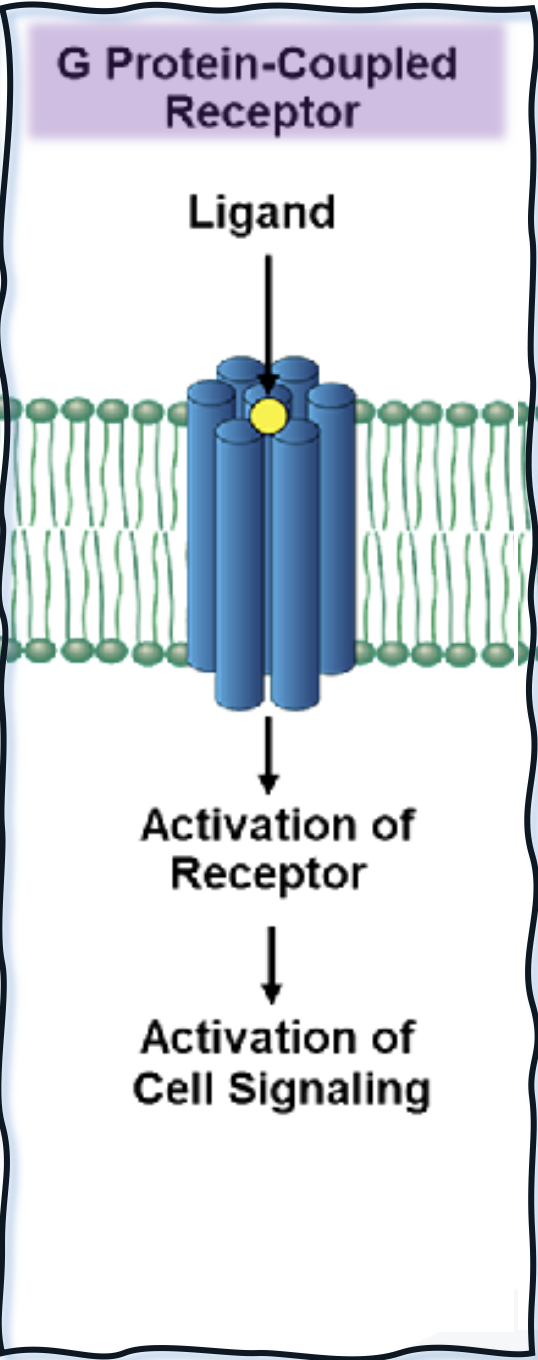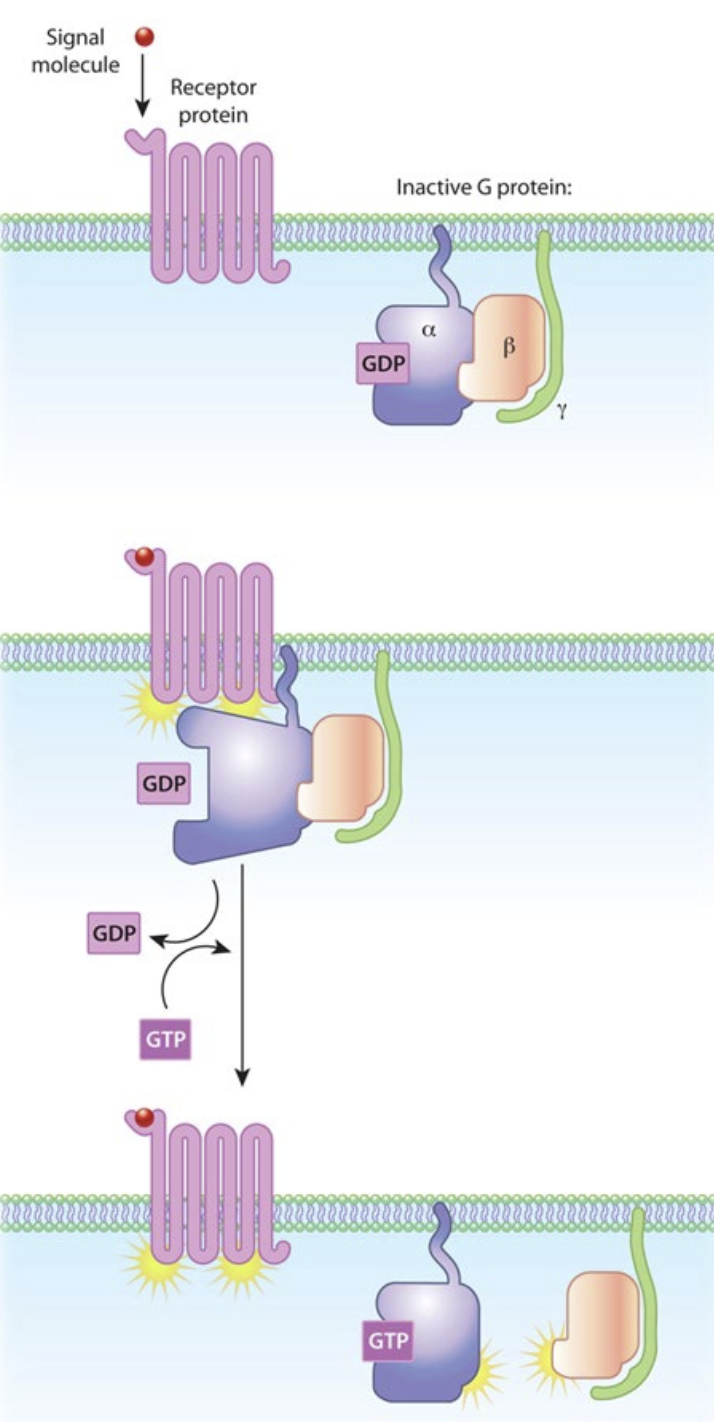2.5 Cellular communication 1
Cells and Tissues
Cellular Communication
Fundamental aspect of organismal complexity and functionality.
Importance of Communication
Critical for maintaining homeostasis and coordinating body systems:
Nervous System: Fast-acting communication via electrical signals.
Immune System: Regulates response to injury and infection.
Digestive System: Coordinates digestion and nutrient uptake.
Cardiovascular System: Distributes hormones and nutrients.
Musculoskeletal System: Controls movement and response to stimuli.
Integumentary System: Protects and senses environmental changes.
Excretory System: Regulates waste elimination.
Reproductive System: Controls reproduction and development.
Endocrine System: Hormonal communication for long-lasting effects.
Respiratory System: Manages gas exchange efficiently.
How Cells Talk
Signal Perception
Ligand Signal: External signaling molecules (ligands) bind to receptors on target cells.
Molecule- Receptor Interaction: Initial communication occurs when ligands bind to specific receptors.
Intracellular Signal Transduction
Signal Transduction: Converts extracellular signals into intracellular responses.
Relay Molecules: Amplifies the signal through a cascade of intracellular signaling events.
Cellular Response
Cellular Response: Ultimately, cellular actions are taken based on the initial signals, including changes in gene expression, growth, metabolism, and other cell functions.
Types of Cell Signaling
Autocrine Signaling
Cells respond to signals that they themselves release.
Contact-Dependent Signaling
Requires direct contact between signal-secreting and target cells.
Paracrine Signaling
Signals diffuse across a short distance to nearby cells.
Endocrine Signaling
Signals are distributed throughout the body via the bloodstream.
Ligands and Receptors
Ligands
Extracellular Chemical Signals: Such as proteins, lipids, and ions secreted by signaling cells.
Types of Ligands: Can be hydrophobic (lipid-soluble) or water-soluble.
Secreted by the siganalling (sensory) cell
local and long distance messengers
bind to the target cell
Reactions (receptor-ligand binding) can be:
Reversible (varying time frame)
Irreversible
Receptor agonist
Ligand binds - activates → cellular response
Receptor antagonist
Ligand bind - no effect → prevents agonist binding

Hydrophobic ligand
Lipid soluble, cross the plasma membrane
Steroid hormaones, derived from cholesterol
Sex steroids
Osetrogens
A group of sex steroids that are primarily involved in the female reproductive system and have various physiological effects, including regulation of the menstrual cycle, maintenance of pregnancy, and development of secondary sexual characteristics. They are lipid-soluble and derived from cholesterol.
Androgens
A group of sex steroids that primarily influence male characteristics and reproductive activity. They are responsible for the development of male physical traits such as facial hair, deep voice, and muscle growth. Testosterone is the most well-known androgen, regulating various functions in both males and females.
Progesterone
A steroid hormone involved in regulating various functions in the female reproductive system, including preparation of the uterine lining for pregnancy, maintenance of pregnancy, and regulation of the menstrual cycle. It plays a critical role in promoting gestation and supporting early stages of fetal development.
Corticosteroids
Glucocorticoids (cortisol)
A class of corticosteroids that play a vital role in the body's response to stress by regulating metabolism and inflammation. Cortisol is the most well-known glucocorticoid, influencing a variety of functions including glucose metabolism, immune response modulation, and blood pressure regulation.
Mineralocorticoids (aldosterone)
A class of corticosteroids involved in the regulation of electrolyte and water balance, primarily acting on the kidneys to enhance sodium reabsorption and potassium excretion. The most well-known mineralocorticoid is aldosterone, which plays a key role in regulating blood pressure and maintaining fluid balance.
Eicosanoid hormones
A group of bioactive lipids derived from arachidonic acid, which is a polyunsaturated fatty acid. Eicosanoids include prostaglandins, thromboxanes, and leukotrienes, which play crucial roles in various physiological processes such as inflammation, immune responses, and the regulation of blood flow.
Prostaglandins
A group of lipid compounds that are derived from fatty acids and have diverse physiological effects. They are involved in various body functions, including the regulation of inflammation, blood flow, and the formation of blood clots. Prostaglandins can also play a role in the process of labor and delivery in pregnancy, as well as in the regulation of the menstrual cycle.
Throid hormones
Calcitriol - active form of Vitamin D
Vitamin A
Nitric oxide (gas) - alters intracellular target enzyme activity
Water soluble ligands
Binds to extracellular receptors
Peptides and small proteins
Cytokines, growth factors
Extracellular matrix (ECM) components
Fibrous ECM proteins, glycoroteins, proteoglycans, polysaccharides
Water-soluble hormones
Amine hormones
Catecholamines
A group of amine hormones that includes epinephrine (adrenaline), norepinephrine (noradrenaline), and dopamine. These hormones play significant roles in the body's response to stress and are involved in regulating heart rate, blood pressure, and glucose metabolism. They are produced in the adrenal glands and are crucial for the fight-or-flight response.
Histamine
A biologically active amine involved in various physiological functions. It plays a key role in immune responses, regulation of gastric acid secretion, and neurotransmission. Histamine is released during allergic reactions and can cause symptoms such as itching, swelling, and redness by increasing blood vessel permeability.
Serotonin
A neurotransmitter that is involved in various functions in the body, including regulation of mood, appetite, and sleep. It is derived from the amino acid tryptophan and is known for its role in feelings of well-being and happiness, as well as influencing gastrointestinal function and cardiovascular health.
Melatonin
A hormone that regulates sleep-wake cycles and circadian rhythms. It is primarily produced in the pineal gland in response to darkness, promoting sleep by signaling to the body that it is time to rest. Melatonin levels typically rise in the evening and fall in the morning, playing a crucial role in the body's internal clock.
Peptide hormones
Antidiuretic hormone
A hormone produced by the hypothalamus and released by the posterior pituitary gland, which plays a crucial role in regulating water balance in the body by promoting water reabsorption in the kidneys. ADH helps to concentrate urine and maintain blood pressure by reducing urine output.
Oxytocin
A hormone produced by the hypothalamus and released by the posterior pituitary gland that plays key roles in social bonding, reproduction, childbirth, and the initiation of lactation. It is often referred to as the "bonding hormone" due to its role in promoting attachment and emotional bonding between individuals, particularly between mothers and their infants.
Secretin
A hormone produced by the S cells of the duodenum in the small intestine, which plays a crucial role in regulating the body's pH. It stimulates the pancreas to release bicarbonate, neutralizing the acidity of chyme entering the small intestine from the stomach, thereby facilitating proper digestion and enzymatic activity.
Protein hormones
Insulin
A hormone produced by the pancreas that plays a crucial role in regulating glucose metabolism. It facilitates the uptake of glucose by cells for energy production, promotes the storage of glucose as glycogen in the liver and muscles, and influences fat and protein metabolism. Insulin is essential for maintaining normal blood sugar levels and is particularly important for individuals with diabetes, who may have insufficient insulin production or action.
Human Growth hormone
A peptide hormone produced by the pituitary gland that is essential for growth, cell repair, and metabolism. HGH stimulates growth in children and adolescents and helps maintain tissues and organs throughout life. It plays a critical role in protein synthesis, fat metabolism, and glucose regulation. HGH is also important for muscle and bone development.
Other molecules
Natural or synthetic
Neurotransmitters
Gases (NO, CO)
Ions (CA2+, Na+, K+) - Essential for signal transduction and cellular communication.
Drugs
Target regulatory proteins
Enzymes, carrier proteins, ion channels and receptors
Receptors
Specific Proteins:
Reside on or in target cells to initiate a response.
Span the plasma membrane
bind ligands
Released by the signalling cells
Lock and Key Model: Highly specific interaction between ligands and receptors.
Recetor — ligand interactions are highly specific
A single ligand
Can bind to multiple receptors
Elicits different responses for different cell types
Types of Receptors:
Ligand-Gated Ion Channels: Open in response to binding; allowing ion influx.

Enzyme-Linked Receptors: Activate enzymes upon ligand-binding; lead to internal signaling changes.

G Protein-Coupled Receptors: Active internal signaling pathways upon activation; largest group of receptors.

Intracellular Receptors: Bind lipid-soluble ligands; influence transcription and translation processes.

Intracellular receptors (DNA -Linked nuclear receptors
Internal receptors
Consist of a binding domain and a DNA-binding domain (zinc finger)
Bind lipid soluble ligands
Ligand diffuses across the plasma membrane
binds a recptor in the cytoplasm or the nucleus
The ligand-receptor complex
binds DNA
alters transcription and translation
Slow acting - response hours - days
Receptor ion channels (Ionotropic receptors)
Cell surface receptor
On binding of ligands
Changes shape
Channel opens
Ions flow into the cell
Alter intracellular compositions and activity of the cell
Fast acting
Channel made up of combination of subunits
α, β, γ and δ
Enzyme linked receptors (Kinase-linked receptors
Cell surface receptor
Receptor is coupled to a (signal transmitting) enzyme
On binding of ligands (Cytokines,growth factors, hormaones)
Change in shape
Enzyme activation
Chemical reaction initiated
G-protein coupled receptors (Metabotropic receptors)
cell surface receptor
Response (100ms to seconds)
Largest and most diverse group of receptors
Enzyme linked
G-protein
Diffusible through membrane but bound to intracellular surface
Consists of 3 subunits (α, β and γ)
Inactive state
Form heterotrimeration upon ligand binding, leading to a conformational change that activates the receptor and initiates downstream signaling pathways.
This activation often results in the exchange of GDP for GTP on the α subunit, which then dissociates from the β and γ subunits to interact with various effector proteins.
Active state
Subunits dissociate , allowing the α subunit to modulate the activity of downstream signaling molecules, thereby propagating the signal within the cell.
(α subunit and β-γ
subunit)
α subunit bound to GTP

G-protein coupled receptors (Intracellular signaling cascade)
G-protein → types
α subunit dependent
Different characteristics
influence different
Effector systems
Adenylate cyclase
phospholipase C (PLC)
Second messenger systems
Cyclic adenosine monophosphate (cAMP)
Protein Kinase A (PKA)
Diacylglycerol (DAG)
Inositol triphophate (IP3)
β-γ subunit - dimer
Influence other signalling pathways
Phospholipases
Ion channels
Lipid kinases
G-protein coupled receptors (Metabotropic receptors)
Cell surface receptor
Response (100ms to seconds)
Largest and most diverse group of receptors
Enzyme linked
G-protein
Diffusible through membrance but bound to intracellular surface
Consist of 3 subunits (α, β and γ)
Activation of enzymes
Cascade of events involving activation of secondary proteins
amplification of signal
Mechanisms of Cellular Response
Fast-Acting Responses: Ion channels open rapidly upon ligand binding; alterations in intracellular ion concentrations.
Slow-Acting Responses: Intracellular receptors influence transcription and changes may take hours to days.
Second Messenger Systems
Receptor-ligand complex activates an amplifier enzyme
Results in activation of a single signal molecule
Amplifier enzymes (effector system)
Adenylyl Cyclase: Produces cAMP as a secondary messenger.
Phospholipase C: Produces IP3 and diacylglycerol, leading to intracellular calcium release.
Second messenger molecules
cAMP, IP3, Ca2+, and diacylglycerol play crucial roles in mediating cellular responses to various extracellular signals.
Cellular responses
Altering the activity of enzymes
ion Channels
transporters
genes
Factors Influencing Cellular Response
Type of ligand, receptor, and intracellular signaling pathways dictate variability in cellular responses:
Responses Can Include: Cell growth, differentiation, movement, or apoptosis.
Integrated Communication in Body Systems
Various body systems communicate through hormonal pathways and neural networks to maintain homeostasis, especially during stress (e.g., exercise):
Central Command and Regulation: Integrated circuitry manages complex physiological transitions pertaining to metabolism and circulation, facilitating coordinated responses across multiple systems.